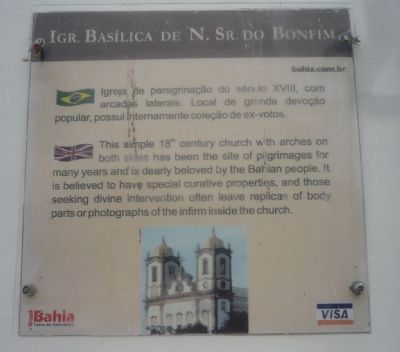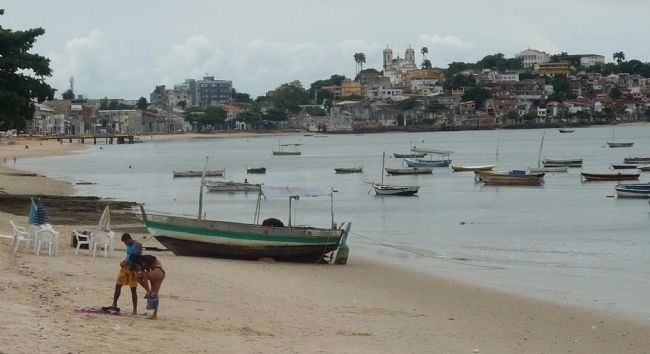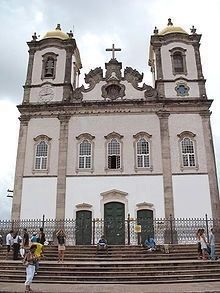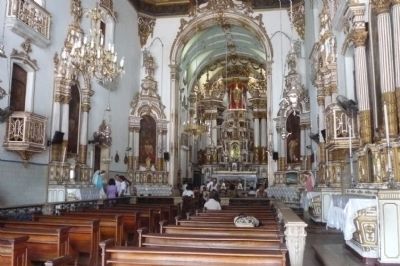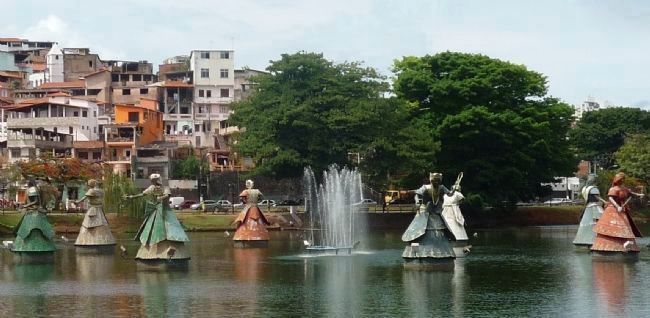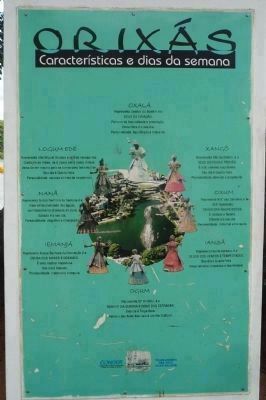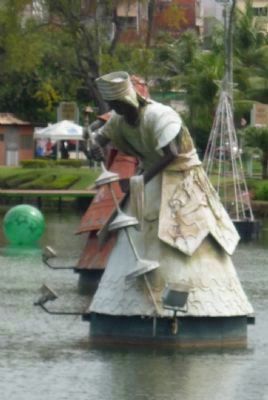Bonfim in Salvador, Bahia, Brazil — Northeast Region (Central South America)
Igr. Basílica de N. Sr. do Bonfim
— "Basilica Church of Our Lord of the Good End" —
Igreja de pergrinação do século XVIII, com arcadas laterais. Local de grade devoção popular, possui internamente coleção de ex-votos.
This simple 18th century church with arches on both sides has been the site of pilgrimages for many years and is dearly beloved by the Bahian people. It is believed to have special curative properties, and those seeking divine intervention often leave replicas of body parts or photographs of the infirm inside the church.
Bahia.com.br
Bahia Brasil Terra da Felicidade
VISA
Topics. This historical marker is listed in these topic lists: Churches & Religion • Colonial Era • Landmarks • Notable Buildings.
Location. 12° 55.432′ S, 38° 30.493′ W. Marker is in Salvador, Bahia. It is in Bonfim. Marker can be reached from Praca Senhor Bonfim west of R. Visc. Cabo Frio. Touch for map. Marker is at or near this postal address: Praca Sr Bonfim 10, Salvador, Bahia 40415-430, Brazil. Touch for directions.
Other nearby markers. At least 2 other markers are within 10 kilometers of this marker, measured as the crow flies. Zumbi dos Palmares Monument (approx. 5.5 kilometers away); Monumento a Stefan Zweig (approx. 9.5 kilometers away).
More about this marker. One of the oldest churches in the city and the most famous pilgrimage church in Brazil, the Igreja Basílica de N. Sr. do Bonfim is especially known for the annual (January) Festa de Bonfim and the syncretism associated with many of its Catholic services, accommodating aspects of West African faith traditions (Candomblé) preserved throughout Brazil but especially in Bahia and the country's northeastern region.
Also see . . . Church of Nosso Senhor do Bonfim, Salvador. (Submitted on January 1, 2010, by Richard E. Miller of Oxon Hill, Maryland.)
Additional keywords. Afro-Brazilians; Festa do Bonfim (Feast of Bonfim); Roman Catholicism; Candomblé
Credits. This page was last revised on May 10, 2023. It was originally submitted on January 1, 2010, by Richard E. Miller of Oxon Hill, Maryland. This page has been viewed 2,316 times since then and 51 times this year. Photos: 1, 2, 3, 4, 5, 6, 7. submitted on January 1, 2010, by Richard E. Miller of Oxon Hill, Maryland. • Bill Pfingsten was the editor who published this page.
